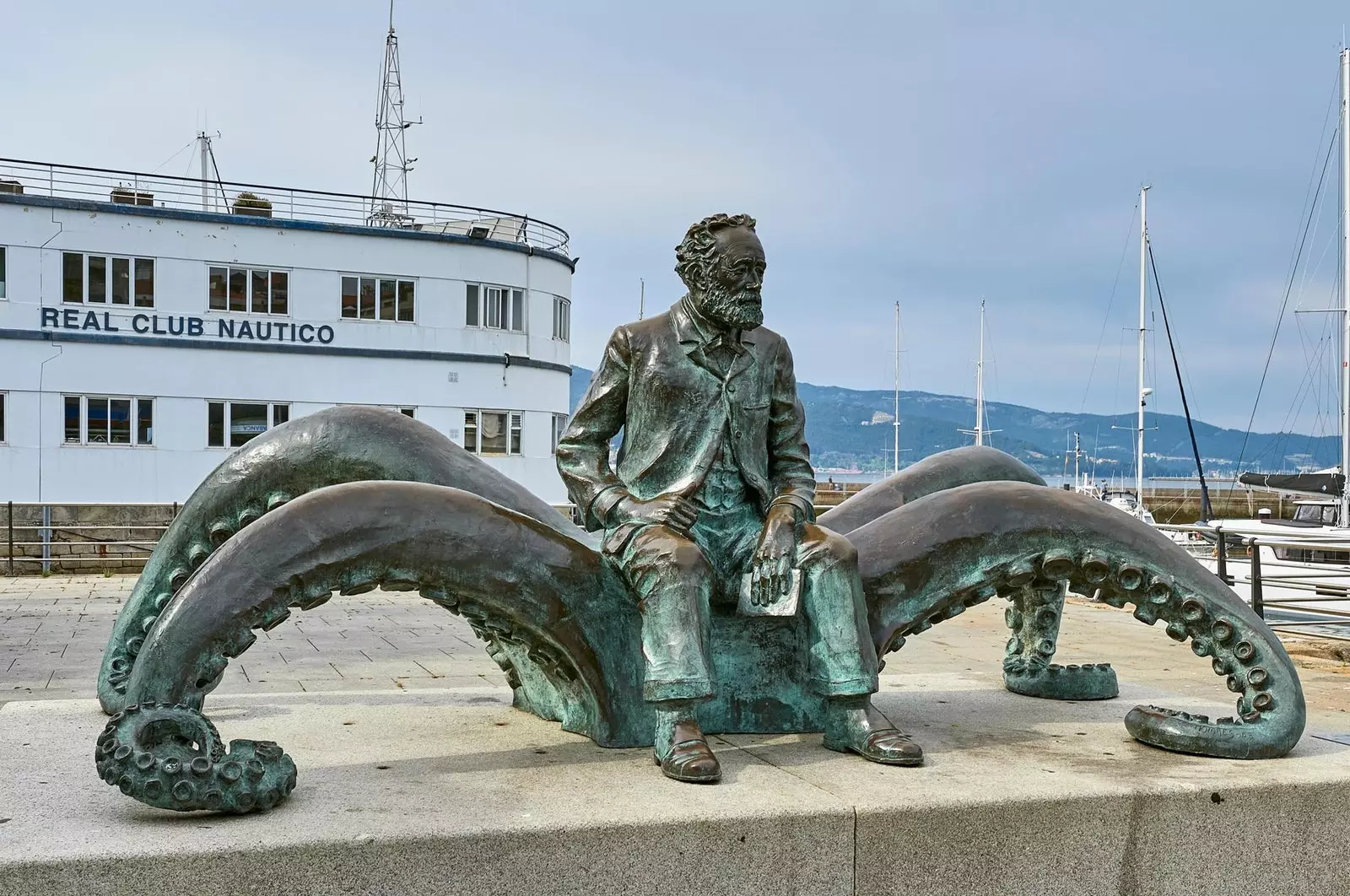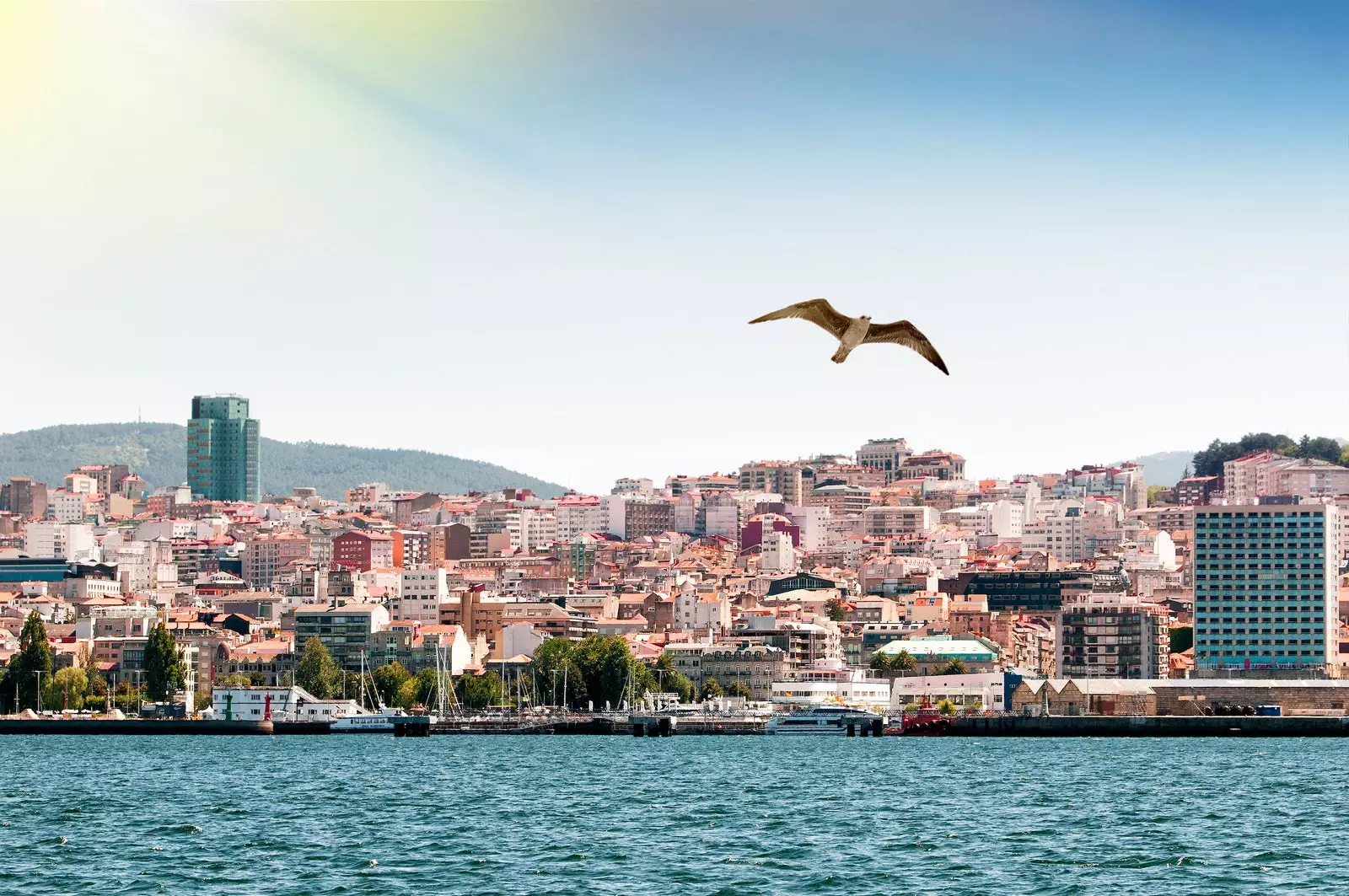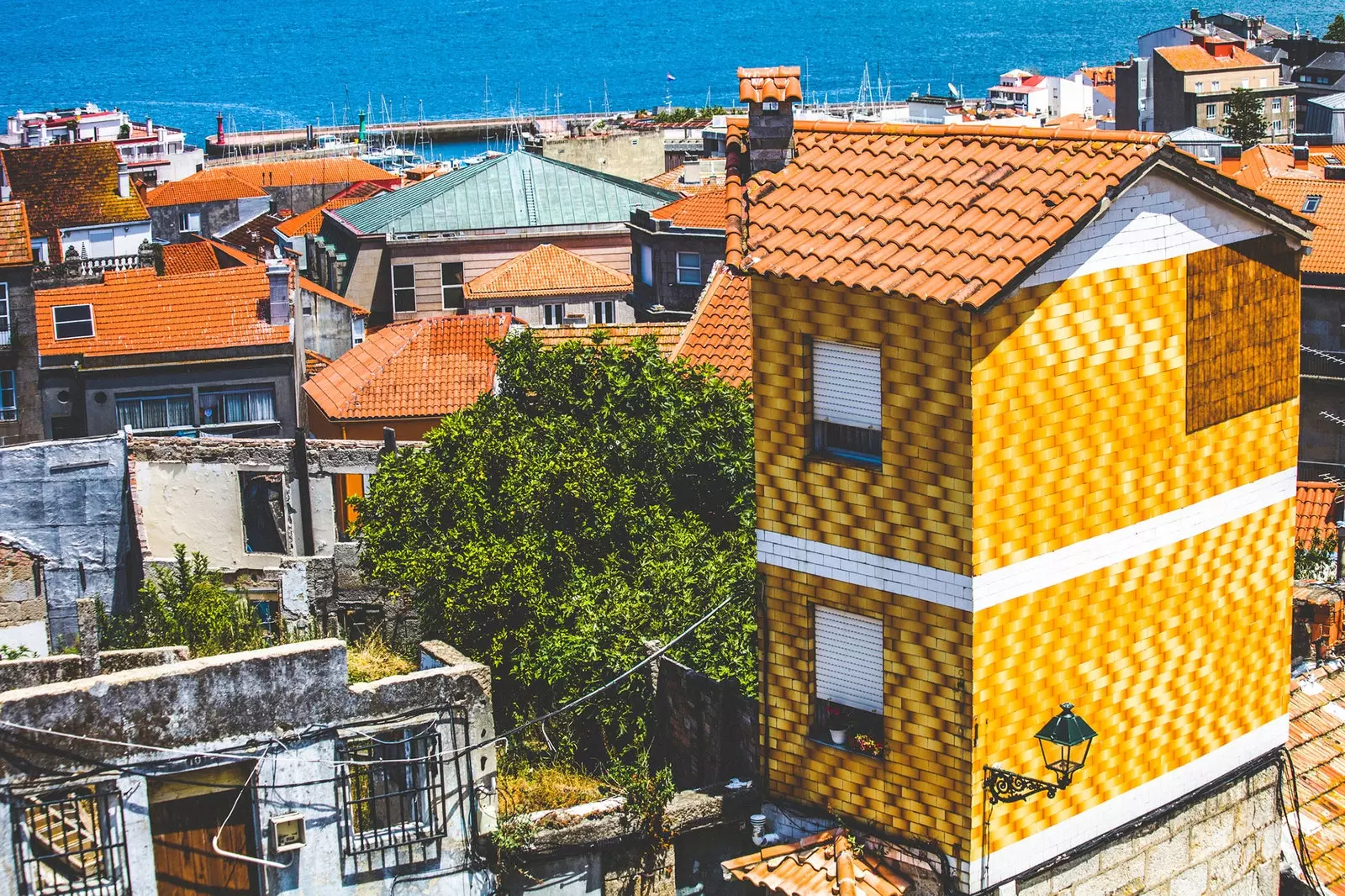
Monument tribute to Jules Verne, by José Molares, in Vigo
The story of Jules Verne and Vigo is written as the best literary loves. With a few nice touches of happy coincidence , since neither of the two visits that the French writer made to the city was premeditated, and of early daydreaming, since he spoke of it before even knowing it, when he placed in its bay a chapter of one of his masterpieces: Twenty thousand leagues under the sea
The charms that the city could offer the writer at that time were not few, starting with one of the most sought-after treasures, that of the Battle of Rande . At the time Verne wrote his novel, a financial scandal arising from the ransom rights to these treasures was making headlines, including in the international press. This is how, according to experts, Verne came to know the legend that claimed that, under the waters of the Bay of Vigo, the spanish galleons who, in 1702, returned from the Americas laden with gold and silver and succumbed at the Battle of Rande.
To that legend was added a reality, the campaign that the also French Hippolytus Magen carried out in Vigo to find the sunken galleons while Verne shaped his captain nemo . In fact, there were two technologies that the writer reflected in his novel, Ruhmkorff lamps and Rouquayrol respirators, which were used for the first time professionally in that rescue attempt in Vigo.
So what better place than that for Captain Nemo to find a loot that would allow him to finance his trips ? The magnificent Vigo estuary, with the Rande treasure, was the setting chosen by Verne. That is why, in those same waters, in front of the island of San Simón, there is a memorial statue which represents Nemo and his divers emerging from the sea with the precious riches that would allow them to continue their adventures.

Rande's treasure was hidden, according to what they said, under the waters of Vigo
FIRST VISIT TO VIGO
It was not until ten years after Twenty Thousand Leagues Under the Sea was published that Verne set foot in the city for the first time. He did it sheltering from a strong storm that he did not allow his ship, the Saint Michelle III, to continue its journey to the Mediterranean. It was June 1878 and the writer spent several days in Vigo, integrating himself into the life of the city, which he turned to such a recognized figure . As can be seen in his diaries, Verne walked every day through the streets of Vigo , he read the press in the now defunct Continental Hotel, he attended dances in recreational societies as elitist as The salon and he was able to get to know, now, the environment that he had already described in his novel and that he baptized in his brief travel notes as “a real fjord”.
Verne also met on his first visit the big festival of the city that, at that time, was celebrated in June: the Christ of Victory procession -which now takes place on the first Sunday in August- and the festivities for the reconquest -currently, on March 28-. Although at that time the writer could not enjoy the enormous representation that is given today, when the historic area of the city is decked out to back to the early 19th century and on each corner careful skirmishes between the French and people from Vigo are recreated until, on Gamboa street, the high point of the party is simulated when the door of the villa is broken down.
Yes, Jules Verne was able to enjoy the impressive panorama offered by the Mount O Castro , place of settlement of the first settlers and therefore origin of the city. The ascent is not an easy walk, but it is well worth discovering the profile of the city from above and contemplating, at its peak, the old fortress , considered one of the best viewpoints in the area, with an unbeatable view of the estuary. From there, Verne was able to delight in the wisdom of his choice of that corner of the world as the setting for one of his masterpieces.

Verne's diaries reflect the writer's walks through the streets of Vigo
THE FOOTPRINT OF VERNE IN VIGO
Verne's second visit to Vigo was in May 1884, when, once again, the writer's ship landed in the city, again unscheduled, due to a breakdown . Interestingly, the arrangement was carried out in the Workshops of Antonio Sanjurjo who, in 1898, built a submarine to defend the estuary against a potential US attack, at that time at war with Spain, and which can be seen today in the Museo do Mar de Galicia. The legend attributes a friendship between Verne and Sanjurjo which, however, experts dispute.
Although it has been slow to extol it as such, the figure of Jules Verne has been of enormous relevance in Vigo, placing the city on the literary map more than 150 years ago . However, it was not until 2005, coinciding with the centenary of the writer's death, that Vigo began to honor Verne with a statue . Commissioned and donated by the Pontevedra Women's Association , the sculpture shows the French looking at the sea and sitting on a giant squid like the one that attacks the Nautilus in his novel.
Also from 2005 is the plaque and the sculptural ensemble of the island of San Simón showing Nemo and the divers from him. And finally, seven years later, in 2012, the Vernian Society of Vigo , the second in Spain after Barcelona, to praise, among other things, the writer's passage through the city. And it is that, as Verne himself wrote: “Well, we are precisely in the Bay of Vigo, Professor Aronnax -Captain Nemo answered me-, and that, if you wish, it is up to him to unravel its secrets”.
